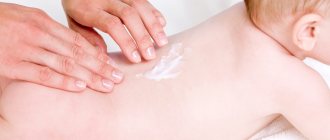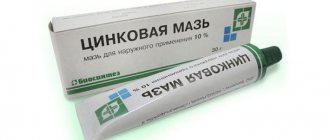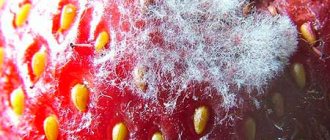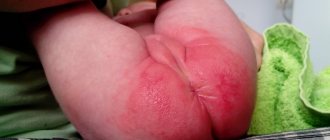Pay attention to the composition
To treat oily seborrhea on the scalp, it is recommended to use cosmetics, namely creams, shampoos, gels, and aerosols. The active ingredients that help eliminate seborrhea are:
- Plant extracts: sage, peppermint, celandine, nettle;
- Exfoliating ingredients: salicylic acid 2%, sulfur, selenium disulfide, sodium thiosulfate solution;
- Antifungals: ketoconazole, clotrimazole;
- Antibacterial: zinc pyrithione, tea tree essential oil, octoporos;
- Anti-inflammatory: medical tar, petroleum alcohol solution;
The therapeutic regimen with medicated shampoos is as follows: 2 times a week in a course of a month, you need to wash the scalp with a small amount of the product. Once the effect is achieved, continue to use the shampoo as a preventive measure for 14 days. After the course of treatment, it is recommended to switch to moisturizing, nourishing products with vegetable oils and herbal extracts.
How to choose a shampoo to treat seborrheic dermatitis?
And finally, here are some recommendations for choosing a shampoo that helps eliminate dandruff if you neglected going to the doctor and decided to buy it yourself.
- Look at the composition. It must contain components that are effective against fungus (ketoconazole, ciclopirox and others). Otherwise, the product will not have the desired effect.
- Assess your budget. Some products are expensive, and the consumption can be high, and you won’t be able to get rid of it with just one bottle. Understand whether you can complete the full course of treatment with a particular drug based on these factors.
- Read the recommendations on the forums. Perhaps someone has already left a review about this or that drug or told their treatment story.
- Consider whether the product needs to have additional effects (for example, improve hair condition). Choose the composition based on your wishes.
Review of effective shampoos
Depending on the type of seborrheic dermatitis, cosmetic products are classified into oily and dry seborrhea. For dry type of dermatitis, it is recommended to use: Friederm Tar, Keto Plus, Sebopirox 911 and analogues. The following drugs fight oily dandruff: Sulsena, Skip Cap, Friederm Zinc.
Sulsena
The active component of the shampoo is selenium disulfide. This substance quickly penetrates the damaged epidermis and eliminates the cause of inflammation. Can be used as a prophylaxis against fungal skin lesions. The course of treatment should not exceed 2 weeks. Please note that selenium disulfide is an aggressive chemical component that can provoke an adverse skin reaction, namely: itching, tissue damage, burning, redness. Use sulsena in a small amount 2 times a week to treat seborrhea.
Lybriderm Zinc
The active ingredient is zinc, as well as a moisturizing and anti-inflammatory component - allantoin. The result after using Libriderm is noticeable within the first week. Zinc disinfects the skin and fights excess oil.
Libriderm Zinc should be used in this way: moisten the hair roots with warm water, apply no more than 1 tsp to them. products, lather thoroughly. It is necessary to leave the drug on the skin for about 10 minutes for it to begin to act. Afterwards, rinse the shampoo with water. The course of treatment lasts 2 months without interruption. Long-term use of Libriderm is due to the fact that it does not contain aggressive components that could damage the skin.
Cynovitis
Cynovit contains zinc and the component climbazole 1%. Some patients may develop an allergic reaction to climbazole, so an allergy test should be performed before use. If the shampoo has shown its effectiveness, then the course of treatment can be continued in combination with antihistamines.
The course of treatment is 3 times a day for 30 days. After getting rid of seborrheic dermatitis, Cynovit can be used for prevention. To get a one-time quick result, it is recommended to leave the shampoo on the scalp for about 15 minutes.
Sebozol
The active ingredient is ketoconazole. The peculiarity of this shampoo is that when you use it, the amount of dandruff increases. But, after a week, the dermatitis disappears sharply. The product is suitable for sensitive scalp and for use in children over 1 year of age. You need to use anti-seborrhea shampoo in 2 stages: treat dandruff for the first 2-3 weeks, then use the cosmetic product as a preventive measure.
Precautions when using any of the products to combat seborrheic dermatitis are the same:
- Avoid contact with eyes;
- For single use, use a minimal amount of product – no more than 5 ml;
- If you overdose the product, you may experience an unpleasant burning sensation and itching. In this case, you must stop using the cosmetic product.
Product Features
There are many reasons why, even soon after washing, hair becomes greasy and literally strewn with dandruff.
All of them lead to the fact that the skin can no longer cope with the volume of sebaceous secretion and begins to peel and itch. Good medicinal shampoos can eliminate unpleasant symptoms and normalize the regeneration of the dermis, thus reducing the number of flakes on the hair.
However, you should understand that you won’t be able to cope with seborrhea with a detergent alone if the problem is caused by hormonal changes, prolonged stress, vitamin deficiency and other serious reasons.
Please note that shampoos for oily seborrhea normalize the local microflora of the skin and improve the structure of the hair, but do not solve the problem from the inside.
How to choose
The dandruff elimination product must match the type of white flakes. There are universal products designed for oily and dry forms of seborrhea, and there are those that are suitable exclusively for oily or dry hair. Please read the packaging carefully to find this information from the manufacturer.
Try to buy products that do not contain artificial colors, fragrances, preservatives, or parabens. At the same time, it is often very problematic to find a product without the currently popular sulfates. Sometimes they are even contained in cosmetics declared by the manufacturer as natural.
Study the list of contraindications. As a rule, there are few of them. Although some products are not intended for pregnant and lactating women, and in some cases they have contraindications for various diseases.
Before purchasing this product, consult your doctor. There are cases when drugs with the same active ingredient have different effects on specific people.
Compound
Perhaps this is the main thing you need to pay attention to when purchasing. For hair that suffers from increased oiliness and an abundance of keratinized particles, the following components in shampoo are especially useful:
- ketoconazole, bifonazole, clotrimazole - any of these substances has an antifungal effect, inhibits the development of harmful bacteria and normalizes the activity of the sebaceous glands;
- salicylic acid dries, disinfects and exfoliates the dermis, relieves inflammation;
- zinc has antibacterial and antifungal effects on the skin;
- Selenium sulfide exfoliates keratinized scales, affects fungal colonies, and promotes normal skin regeneration;
- ichthyol is an antiseptic, which also relieves pain and reduces inflammation;
- essential oils of tea tree, lavender, grapefruit have antimicrobial properties;
- natural extracts of nettle, burdock, sage, chamomile and other herbs reduce oily hair and care for hair;
- tar has a drying effect on the dermis, eliminates irritation, strengthens hair follicles;
- Vitamin complexes nourish and heal curls and skin.
Advantages and disadvantages
Regular and correct use of special shampoos for oily seborrhea has the following advantages:
- relief of itching and discomfort;
- eliminating dandruff;
- Effectiveness after 1-3 applications;
- improvement of hair structure;
- reduction of the inflammatory process;
- reducing the amount of sebum secreted due to the effect on the functioning of the sebaceous glands;
- drying of the skin;
- economical use;
- a large assortment;
- easier hair care: it becomes soft, manageable, and does not require frequent washing.
However, such products are not without disadvantages:
- often one of the main disadvantages is the high cost of even small bottles;
- shampoos for oily seborrhea have contraindications and can cause allergic reactions;
- If overdosed or used incorrectly, they can cause harm (increase unpleasant symptoms).
Attention! Shampoo does not eliminate the cause of dandruff, unless it is associated with improper hygiene or incorrect selection of hair detergent.
Contraindications
No medication should be applied to the scalp if it has open wounds, abrasions, or ulcers . In addition, the main contraindication is individual intolerance to the components. The vast majority of manufacturers warn about this.
Sometimes in the description of shampoo for oily seborrhea you can find restrictions on use for pregnant and lactating women, as well as for children (there are specially developed products for the younger generation).
Shampoos recommended for children
Seborrhea in children most often occurs due to hormonal disorders. This means that treatment of a dermatological disease will need to be carried out not only with cosmetics - shampoos, masks, but also with corrective hormonal drugs.
Please note that dry, oily and mixed seborrhea is treated with completely different means. You need to be especially careful when treating skin lesions in children under one year of age. Dermatologists do not recommend self-medication, since all responsibility for the occurrence of side effects falls on the patient.
Treatment of seborrhea in children over 5 years of age is carried out with shampoos from the list:
- Keto Plus
The cosmetic product contains 2 active ingredients: zinc and ketoconazole. It is recommended to use for seborrhea caused by bacteria and infections. Regular use of Keto Plus for a month eliminates skin itching, flaking, and normalizes the functioning of the sebaceous glands.
- Dermazol in the form of cream and shampoo
Dermazol is an effective antifungal agent that must be used for a course of 2 to 4 weeks. Longer use is not recommended, since Dermazol has an antiadrogenic effect, that is, it reduces the production of male hormones. Before using the product, you should consult an endocrinologist.
- Skin Cap
The drug has anti-inflammatory and antibacterial effects. Shampoo, cream or aerosol can be used to treat seborrhea in children over 1 year of age.
- Friederm
Cream shampoo can be used not only to treat scalp diseases, but also to prevent seborrhea. The cosmetic product is selected depending on the skin type - oily, dry, combination.
Friederm Zinc in the treatment of seborrhea
Friederm Zinc is a shampoo used in dermatological practice. This is a white substance with a creamy consistency. Eliminates itching, acts as an antimicrobial and bactericidal agent. They are used mainly for oily seborrhea, which is characterized by the appearance of a crust or plaque.
The action of Friederm Zinc is aimed at general healing of the scalp, restoring the condition of the hair and relieving inflammatory processes in damaged areas. The main thing is that the drug contains zinc pyrithione. This complex compound copes well with pathogens of staphylococcal and streptococcal infections. Thanks to this component, Friederm Zinc has become a popular and effective remedy against seborrhea and many skin lesions.

Directions for use: Apply shampoo to hair that needs to be pre-wetted. Distribute the foam evenly along the entire length, from root to tip, leave for up to 7 minutes and wash thoroughly. Repeated use of shampoo is recommended. Use for 2 weeks. After such “therapy”, reduce the amount of hair washing with Friederm Zinc to once a week.
In addition to seborrheic dermatitis, it is also recommended for use in cases of lichen, dermatitis of various natures and partial or complete hair loss. Undesirable consequences may appear: redness accompanied by itching.
Price comparison table
Before purchasing medicated shampoo for seborrheic dermatitis, we recommend that you read the instructions for use of the products and the price category. An expensive shampoo is not always more effective than a cheap product, and vice versa.
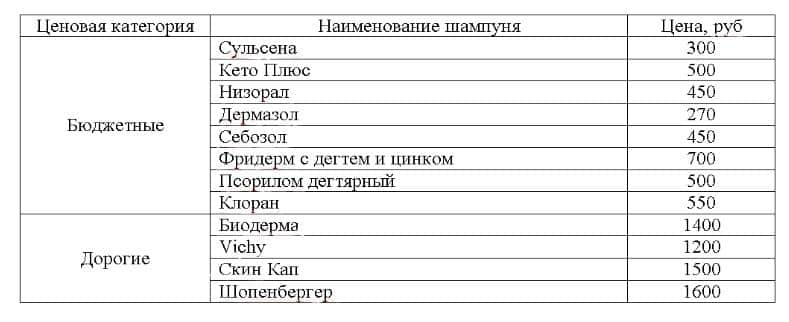
Self-medication is not the best option in the treatment of seborrheic dermatitis. Most of the pharmaceutical products presented are therapeutic, not preventive. This means that the product has indications, contraindications and side effects. It is necessary to understand that dandruff can occur not only due to improper care of the scalp, but also as a result of hormonal imbalance, dysbacteriosis, and inflammatory processes of internal organs. The type of therapy differs in each individual clinical case.
Alerana against seborrhea
Alerana is a shampoo for oily and combination hair. It contains natural ingredients - extracts of various medicinal herbs (horse chestnut, sage and others). All this helps to quickly cure seborrhea, normalize the functioning of the sebaceous glands and reduce oily skin.
The product also strengthens hair follicles, attacks pathogenic infections and eliminates them. It is suitable for daily use. Therefore, after the first procedures, hair becomes less brittle and the amount of hair loss decreases.
Application of this product should be in small quantities. Apply over the head using massage movements for several minutes. Wash off thoroughly with warm water. In combination, you can use Alerana balm-rinse.

It is worth noting that Alerana is the most effective shampoo against any form of seborrhea. It does not cause allergic reactions and is suitable even for sensitive skin. Side effects occur very rarely as a result of individual intolerance.
Reviews
Irina, 31 years old
I recently developed dandruff. A friend advised me to use Sulsena. I used the shampoo for a month, but the dandruff disappeared after the first use. I did not interrupt the course so that the problem did not arise again.
Marina, 34 years old
My oldest daughter developed dandruff when the transition began. I immediately bought her tar shampoo. Literally after the first use, the dandruff disappeared, but we don’t risk changing it to regular shampoo yet.
Schonenberger against seborrhea
Schonenberger is one of the most expensive shampoos for external use. It contains only natural ingredients that provide rapid treatment of seborrhea. Schonenberger is well tolerated by all categories of the population, including children and adolescents.
The composition of the drug is represented by several medicinal herbs: butyl avocadate, nettle and sage. The first herb eliminates oily skin, promotes the normal functioning of the exocrine glands and fights pathogens. The other two herbs speed up wound healing and strengthen hair follicles, causing them to fall out less. After just a few times of use, the skin dries out, the scales on the head and hair fall off.
It is recommended to wash your hair with Schonenberger shampoo no more than once every 2 days. Use it until the symptoms of seborrhea subside. After this, reduce the use to 1 time every 4 days. Even with a long course of treatment, the shampoo does not irritate the skin. It is prohibited for use by people under 16 years of age.
Homemade shampoo for seborrhea
To prepare your own cleanser at home, you need to prepare the following ingredients:
- Chicken egg yolks.
- Alcohol.
- Sage.
- Rose essential oil.
- Raw yolks are beaten; for one serving of shampoo you need to take 2 yolks.
- Next, 20 ml of alcohol or vodka is added to them.
- You need to add 1 drop of essential oil and 4 drops of sage to the general mixture. The entire resulting mixture should be whisked.

It is important to use fresh, recently prepared homemade shampoo. The main distinguishing technique in using homemade shampoo is the need to leave the product on the hair for at least 5 minutes. Rinse off the home remedy with warm water, and then rinse your hair with a decoction of herbs.
Main symptoms
Classic signs of seborrhea of the scalp include inflamed skin, flaking, and itching.
The appearance of the scales is white, flour-like in nature, possible peeling in the form of layers.
This type of seborrhea does not entail changes in the scalp itself, which is why it is called dry seborrhea.
Patients describe this condition as dandruff, which is accompanied by a slight sensation of itching.
In the absence of proper timely hygienic care for the head, the process worsens and new areas of the skin are affected.
In severe cases of the disease, the development of erythema, the appearance of plaques with thick scales, and occasionally hemorrhagic crusts are observed.
Subjective sensations are associated with severe itching.
In the absence of timely therapeutic measures, the inflammatory process spreads to the smooth skin of the chest, back and face, and foci of secondary bacterial infection begin to develop.
Therapeutic treatment measures
Treatment measures for dermatitis on the head are carried out comprehensively. The patient is prescribed a number of recommendations, which include:
- dieting,
- saturation of the diet with vitamins A, B, C, zinc,
- the use of medications (ointments, shampoos, gels) that have an antifungal effect,
- use of antiseptics,
- advice from traditional medicine.
If a dermatologist determines that the cause of your illness lies in a disease in another part of the body, consult with a specialist, treat the disease at the root, and not superficial symptoms such as itchy scalp, hair loss, and the formation of skin scales.

Squafan S, seborrhea shampoo
Seborrheic and atopic dermatitis on the head in adults and children
Dermatitis is an inflammation of the upper layer of the skin, which occurs under the influence of environmental factors, as well as during the development of allergies. Particularly unpleasant is dermatitis of the scalp, which significantly worsens a person’s appearance and causes discomfort.
Dermatitis in an adult
Scalp dermatitis affects about 5% of the population aged 18 to 50 and is a recurrent disease that is associated with impaired metabolism and sebum production of the scalp. It is observed in people with reduced immunity, suffering from chronic microbial infections or living in an unhealthy climate.
In adolescence, seborrheic dermatitis can develop due to an addiction to chocolate and sweets, eating fast food and a lack of vitamins and minerals.
Dermatitis in children
seborrheic dermatitis in a child
In a child, seborrheic crusts on the scalp are rare, but can still be observed from the first year of life. In children, dermatitis develops under the influence of hormones, as well as hereditary predisposition.
In children, from the first weeks of life, areas of peeling (gneisses) may appear on the scalp, and areas of maculopapular rashes on the body. This problem occurs in approximately 10% of newborns, with boys suffering from infantile dermatitis more often than girls.
Here you will find a similar article on the topic of skin dermatitis in children.
Causes of dermatitis
Dermatitis develops under the influence of many factors:
- Activity of fungal microflora.
- Endocrine system disorders, hormonal imbalance.
- Nervous disorders, chronic stress.
- Decreased immune defense of the body.
- Abrupt climate change.
- Excessive loads, overwork.
- Allergic reactions.
In addition to the scalp, the process may involve the eyebrows; in men, the cheeks and chin, neck and nasolabial fold.
Types of dermatitis
There are two types of dermatitis on the scalp:
- seborrheic, developing under the influence of a fungus of the Malassezia furfur species;
- atopic, which occurs as an allergic response to food or household contact allergy.
Seborrheic dermatitis
Seborrheic dermatitis on the head occurs due to malfunction of the sebaceous glands under the influence of fungus, stress, infection or hormonal disorders.
The following symptoms are noticeable with seborrheic dermatitis:
- Erythemal or papular rashes form on the scalp.
- The skin is very flaky, the scales have a whitish or yellowish tint.
- Crusts form, the skin underneath becomes red and wet.
- Inflammation is accompanied by itching, burning, and pain.
- Below the hairline, the skin turns red and acne may appear.
- When scratched, the scabs are removed, revealing inflamed skin. This can lead to the development of weeping eczema.
When removing scabs with your hands, a secondary infection is introduced into the wounds, which aggravates the situation and leaves unsightly scars.
Atopic dermatitis
Dermatitis of an allergic nature most often develops in children of the first year of life or between the ages of 2 and 7 years. It manifests itself especially clearly in the first years of life, weakens with age, and, if left untreated, persists into adolescence. The disease affects adults in cases of advanced allergies and an unhealthy lifestyle.
Manifests itself in the form of the following symptoms:
- Severe itching.
- Bright red rash on the scalp.
- Small bubbles appear.
- With severe allergies, the temperature may rise.
The severity of symptoms is more pronounced the younger the patient. Additional symptoms of allergies may include digestive disorders, bronchial asthma, allergic rhinitis and dysbacteriosis.
Diagnosis of dermatitis
The diagnosis is made by a dermatologist based on an examination:
- Clinical examination, history taking.
- General blood analysis.
- Analysis for hormonal balance.
- Dermatoscopy.
- Collection of material to determine the activity of fungi or pathogenic microflora.
- Determination of the state of the immune system.
Based on the test results, the doctor prescribes a set of measures to treat dermatitis. If atopic dermatitis is detected, additional allergy tests are performed to identify the causative agent of the allergy. An allergist treats dermatitis of an allergic nature.
Treatment of dermatitis
To get rid of dermatitis, you will need complex therapy using special shampoos, ointments and cosmetics. In some cases, they resort to physiotherapy and also prescribe an individually selected diet.
Here you will find an article about another type of dermatitis - the treatment of perioral dermatitis.
Shampoos against dermatitis
Shampoos for patients are selected specifically; they contain the following components:
- Tar.
- Ciclopirox.
- Zinc.
- Ketonazole.
Specialized shampoo is purchased at the pharmacy. It is better to wash your hair with boiled water or herbal infusion: calendula or chamomile. It is necessary to carry out hygienic care of the scalp every day until the symptoms completely disappear.
Ointments
In the treatment of atopic dermatitis, ointments based on glucocorticoids are often used:
- hydrocortisone;
- betamethasone;
- clobetasol.
Seborrheic dermatitis is treated with ointments that suppress fungal activity based on selenium, salicylic acid, tar and ichthyol. Apply the ointment to the scalp in an even, thin layer at the roots of the hair, slightly extending beyond the hair growth line.
After the symptoms subside, the goal of therapy will be to soften the skin and restore metabolism; during this period, ointments based on plant extracts, ichthyol and hyaluronic acid are used.
For any type of dermatitis, you can use Losterin , which contains specially selected components and will help eliminate the symptoms of the disease in a short time.
Diet for dermatitis
For dermatitis, the main goal of the diet is to establish the balance of substances in the body, then the symptoms of the disease will subside. Diet can also help avoid relapse of the disease.
The following products will be prohibited:
- Strawberries, the citrus family and any highly allergenic fruits.
- Fast food products, baked goods, chocolate and confectionery.
- Smoked, spicy foods, foods with excess salt, marinades and canned food.
- Foods with excess fat.
- Mushroom dishes.
- Caviar of all types of fish.
It is recommended to base your diet on the following products:
- Vegetables: pumpkin, zucchini. Other vegetables can be consumed in limited quantities.
- Dietary meat: turkey, rabbit, beef, chicken.
- Berries, both fresh and frozen, juices and fruit drinks.
- Porridge.
- Fermented milk products: kefir. Low-fat cottage cheese, yoghurts.
It is recommended to drink more fluids, freshly squeezed juices, fruit drinks and herbal tea during the course of treatment. You need to eat regularly and develop a balanced diet. To strengthen the microflora, it is necessary to consume more fermented milk products and, if necessary, take a course of prebiotics.
In case of atopic dermatitis, you must monitor your diet with particular rigor, avoid allergenic foods, and, if necessary, take a course of antihistamines.
Folk remedies
To normalize the functioning of the sebaceous glands, traditional medicine recommends using the following means:
- Sea salt - a solution is prepared from it for rinsing hair after washing.
- An infusion of sage or string is used to make lotions - this procedure relieves burning and itching. It is especially useful for children to rinse their hair with a solution of the series - then they scratch their hair less and do not get infected.
- To get rid of crusts, you need to prepare an infusion of burdock root, elecampane and St. John's wort: the collection is simmered over low heat for about 20 minutes, then infused and filtered. The resulting product is rubbed into the roots of the hair after each shampoo, after which a warm cap is put on for forty minutes. There is no need to rinse off the product.
- To soften the crusts, you can prepare an ointment based on a decoction of plantain, St. John's wort or calendula: the decoction is evaporated by half of the original volume, then added to Vaseline. You can replace Vaseline with butter without salt. The resulting ointment is rubbed into the scalp until the symptoms disappear completely.
- It is recommended to make lotions from oak bark, chamomile or sage infusion.
- Instead of shampoo, you can wash your hair twice a month with mustard powder
- To suppress fungi , you can use a weak solution of vinegar or salicylic acid when washing your hair instead of water.
When using any products, the skin must then be washed thoroughly with water; it is better to avoid using ordinary soap, replacing it with tar soap.
Prevention of dermatitis
In order to prevent the occurrence of dermatitis, the following measures must be observed:
- Lead a healthy lifestyle: spend more time outdoors, give up bad habits
- Eat nutritious, healthy foods, do not overuse fats, carbohydrates, salt and spices
- Strengthen the immune system: hardening, taking vitamins, controlling intestinal microflora are indicated
- Organize your daily routine, get a good night's sleep
- Avoid stress and overwork
- Maintain personal hygiene, wash your hair regularly, use strictly individual hygiene items: washcloth, soap, towel
- Replace bed linen at least twice a month, in case of exacerbation of the disease - weekly
- When choosing cosmetics and shampoos, consult a dermatologist and cosmetologist.
In order for the immune system to be able to resist a fungal infection, it is necessary to receive full treatment for any infectious disease, preventing it from becoming chronic.
Material updated: 12/18/2019
Source: https://heal-skin.com/bolezni/dermatit/dermatit-na-golove.html
Advantages and disadvantages
Tar shampoos have a lot of advantages, due to which they are very popular not only in the treatment of dandruff and seborrhea, but also for comprehensive hair health .
Birch tar, which is included in shampoos, is produced using a special technology by processing birch bark. It does not lose its positive qualities, having a beneficial effect on the scalp and hair.
Advantages of tar anti-dandruff shampoo:
- After using shampoo, hair becomes thick .
- Their growth increases due to improved blood circulation.
- Loss stops.
- The secretion of sebum from the sebaceous glands is normalized.
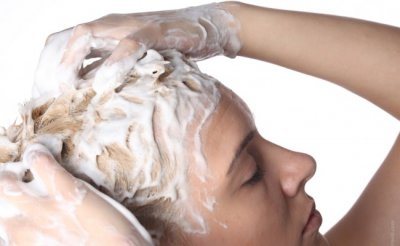
- Using tar shampoo you can treat fungal diseases of the scalp .
- Effective in the treatment of psoriasis and seborrheic eczema.
- Helps eliminate oily shine.
- Promotes regeneration of scalp cells.
- Has antiseptic properties.
- Reduces clogging of scalp pores.
The disadvantages include:
- Severely dries out the skin , which is why it is not recommended for frequent use by people with dry hair.
- Light hair color can become several shades darker.
- With frequent use, the hair gets used to the tar, which may have a negative effect when treating dandruff in the future.
Learn about the use of various folk remedies for dandruff:
- salt, soda, eggs, apple cider vinegar, mumiyo, aspirin, laundry and tar soap;
- masks : with egg, for itching and hair loss, for oily hair;
- essential oils : castor, burdock, tea tree;
- herbs : nettle and celandine.

